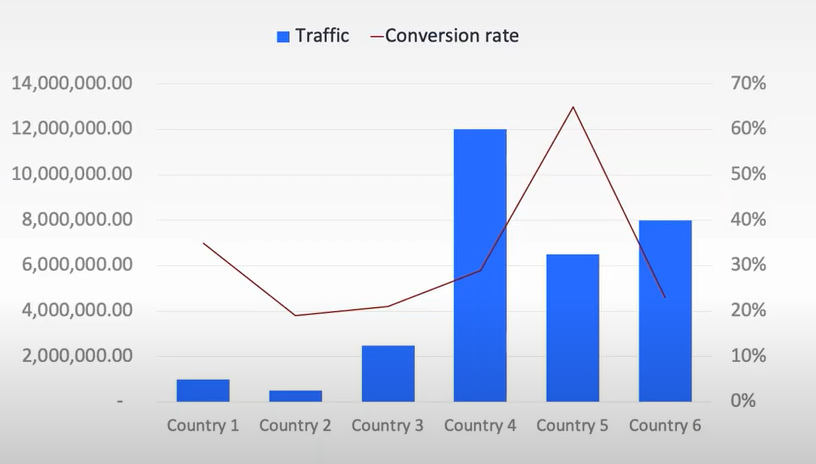I recently had the pleasure of speaking at a webinar organized by our client and partner VWO on “How to Optimize Your Checkout for International Markets”, hosted by our friend Vipul Bansal, Marketing Manager at VWO. During the online event I addressed the importance of localizing your cart for different regions. Since localization is an important objective in eCommerce around the world, let’s go over some of the insights I presented in our talk.
Localizing your cart can have an enormous impact on your bottom line.
Cart localization means tailoring your cart to different cultures, according to the shopping habits of their customers. By optimizing for each country, you will maximize, in turn, your global revenue.
Localization is a process, not a ready-made solution. First, you want to optimize your cart for those countries with the biggest revenue impact. Analyze your traffic and determine what your top markets are, because realistically it may be difficult to cater to all your global customers with tailored-to-fit carts; you should focus on those that bring you the most revenue first.

The second step in localizing your cart is knowing who your visitors are, and control what they see in the cart based on their location. Make sure you have the functionality available to direct your different customers in different directions, based on their geographic location, after they first arrive to make a purchase.
The third step is to do A/B testing to determine what works best in your top markets. In this webinar I shared some examples of A/B testing that businesses can try on their own carts.
Ultimately, if you make all these efforts to localize your cart experience for your diverse global audiences you will see a major global revenue increase. Naturally it will vary by country; as I was pointing out during the live presentation, overall, for 2Checkout transactions, the U.S. tops the potential revenue increase, followed by Canada and the UK. However, it is YOUR best markets that you should focus on.
2Checkout offers out-of-the-box localization for language, currency, payment methods and taxes, but you can manually localize even more.
Finally, we also had a chance to go over the most important cart localization items:
- Local Payment Methods.
Online purchases made using local payment methods reach a level of at least 10% and up to even 50% (and more!), which shows the tremendous impact optimizing this step can have on your revenue. Different countries have different payment methods they prefer, as well; Brazil uses Boleto Bancario, for instance, while Russia prefers Qiwi.
More than 50% of Dutch people pay with iDeal and in China you shouldn’t even consider starting to sell without Alipay or WeChat Pay. Knowing and utilizing these is of paramount importance; many users will not purchase online if their own local payment isn’t available.
Another point worth making is that properly displaying the local payment methods is as important as actually having. Don’t hide the local options in a drop-down menu; make their logos visible and easy to spot in the first section of the cart.
- Cart Flow Country Preferences.
Step one in the cart flow is the summary, two is checkout, and three is review, and these can be rearranged and modified. In general, however, there are usually one-step and two-step flows, the former without a review page and the latter including the review page. It’s important to conduct split-testing to determine which flow best suits each geographic area and their customers.
There are definitely regional preferences, and I supplied a list of several countries and whether they prefer the one-step or two-step flow in this webinar. Again, this is a starting point; you should always test for your audience, as results may vary depending on your target market.
- Content and other items to localize
There are many other ways to do this and we went over a few of them. We also looked at statistics on which regions are particularly sensitive to localization during the webinar. Here are just a few bullet points on what to look at:
- Content: more than translation
- Pricing localization: display, billing currencies, formats
- Taxes: in the local standard (VAT, sales tax, etc.)
- Date and time, graphics, colors, formatting, etc., all need to be tailored to your specific market
- Local support contact phone numbers
- Load time optimized for each region
To watch the complete webinar “How to Optimize Your Checkout for International Markets” and check out what other optimization insights I shared with our audience, view the recording now.





